OUR RECOMMENDATION!
SPOT
FAMOUS SIGHTS
We introduce temples and shrines in the Kinki area, historical buildings, and famous places that you should definitely visit by prefecture.
The required time is only a guideline. Please do your own research before visiting.
OSAKA
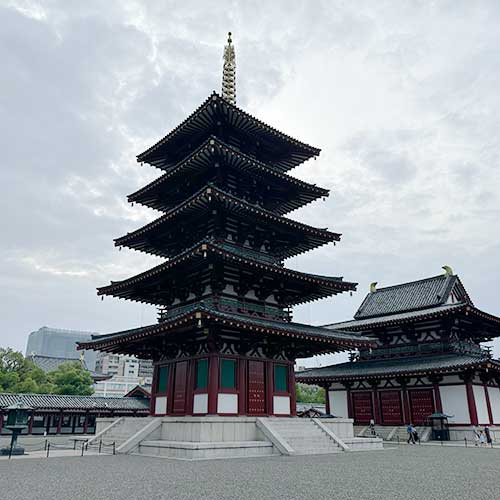
Shitennoji Temple
This temple is said to have been built by Prince Shotoku in the first year of Emperor Suiko (593). It is the head temple of the Japanese sect, regardless of sect, and there are halls related to the founders of each sect.
- address 1-11-18 Shitennoji, Tennoji-ku, Osaka 543-0051
- from REBORN 20min
- SNS
-
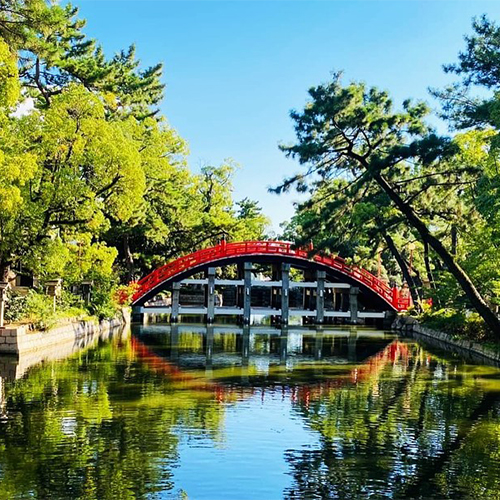
Sumiyoshi Shrine
A shrine dedicated to the sea gods Tsutsuo Mikami and Empress Jingu. It is the headquarters of Sumiyoshi Shrines across the country, and the number of pilgrims on the first three days of the year exceeds 2 million people each year.
- address 2-9-89 Sumiyoshi, Sumiyoshi-ku, Osaka, Osaka 558-0045
- from REBORN 15min
- SNS
-
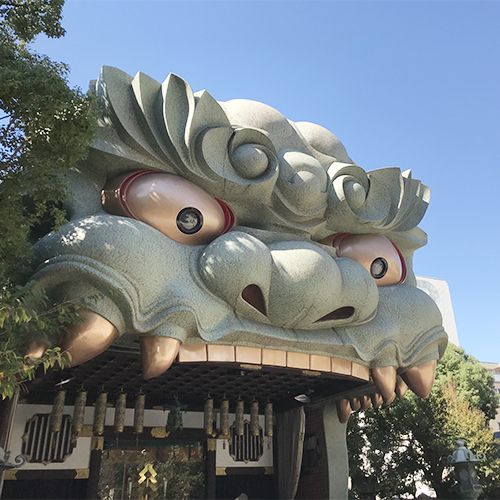
Namba Yasaka Taisha
This shrine is said to be a native deity of the Namba area and is called ``Namba Shimo no Miya''. It is famous for its Shishiden, which depicts a large lion swallowing evil spirits. The tug-of-war ritual held every January has been designated as an intangible folk cultural property by Osaka City.
- address 2-9-19 Motomachi, Naniwa-ku, Osaka-shi, Osaka 556-0016
- from REBORN 15min
- SNS
-
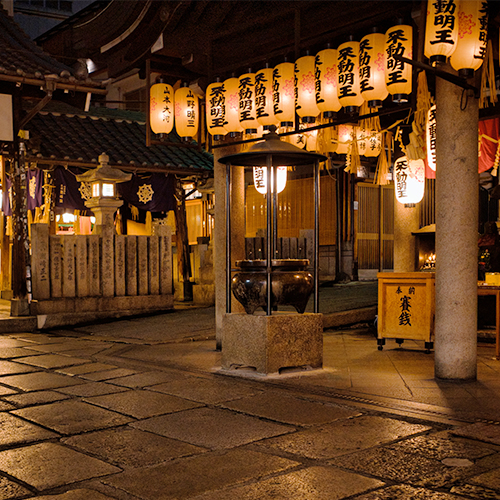
Hozenji Yokocho
A narrow cobblestone alley in the grounds of Hozenji Temple in Namba, Osaka. Both sides of the road are lined with famous restaurants that serve long-established Japanese cuisine, okonomiyaki, and kushikatsu, allowing you to enjoy your meal while enjoying the traditional atmosphere.
- address 1-1-6 Namba, Chuo-ku, Osaka, Osaka 542-0076
- from REBORN 15min
-
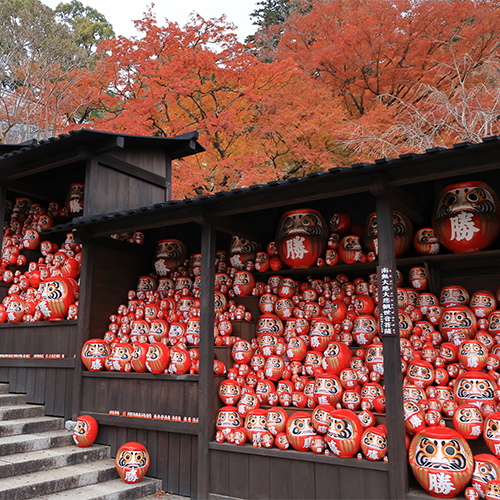
Katsuoji Temple
Katsuoji Temple is known as a temple to pray for good luck in matters such as entrance exams, illness, employment, and business. The sixth head of the temple, Gyoen Shonin, cured Emperor Seiwa of his illness with his prayers, and the Emperor gave him the temple name ``Shooji,'' which later became ``Katsuoji.'' In the precincts, there are rows of dedicate winning daruma.
- address 2914-1 Awumaya, Minoh City, Osaka 562-8508
- from REBORN 1h40min
- SNS
-
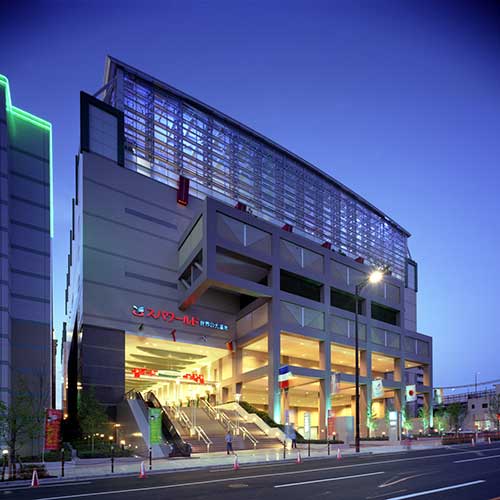
Spa World
A hot spring theme park located in Shinsekai, Naniwa Ward, Osaka City. You can enjoy 17 types of baths from 12 countries around the world, rock baths, and pools, and you can also stay at the attached hotel.
- address 3-4-24 Ebisu Higashi, Naniwa-ku, Osaka, Osaka 556-0002
- from REBORN 9min walk
- SNS
-

Nifrel
A museum themed around living things located at EXPOCITY in Suita City, Osaka. It is a facility that is a combination of an aquarium, zoo, and art museum, and uses video, music, lighting, etc. to create a space that can be enjoyed like art. Kaiyukan is in charge of producing the aquarium.
- address 2nd Floor, NIFREL, 2-1 Senri Expo Park, Suita City, Osaka 565-0826
- from REBORN 1h
- SNS
-
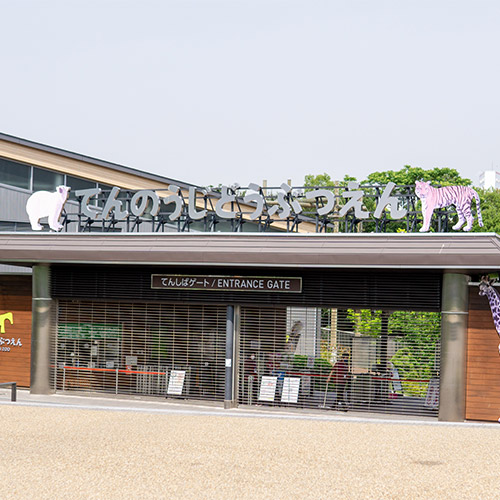
Tennoji Zoo
A zoo located in Tennoji Park in Osaka. We are putting effort into ecological exhibits that recreate as much as possible how animals live in the wild.
- address 1-108 Chausuyama-cho, Tennoji-ku, Osaka-shi, Osaka 543-0063
- from REBORN 11min walk
- SNS
-
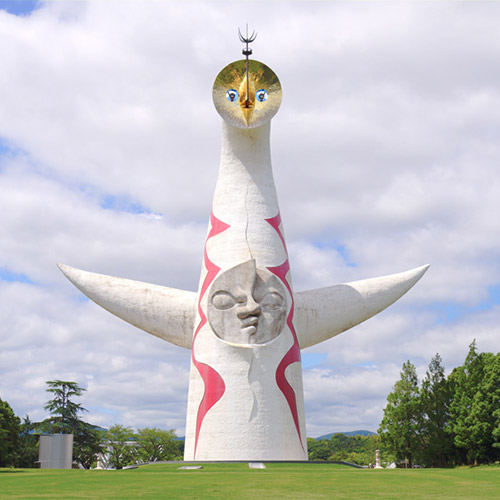
Tower Of The Sun Museum
A work of art and building created by Taro Okamoto that was built as part of the theme pavilion for the 1970 Japan World's Fair. The ``golden face'' at the top, the ``sun face'' on the front, and the ``black sun'' on the back each symbolize the future, present, and past. Inside the tower, there is a ``Tree of Life'' exhibit with the theme of biological evolution, which can be viewed by prior reservation.
- address 1-1 Senri Expo Park, Suita City, Osaka 565-0826
- from REBORN 1h10min
- SNS
-
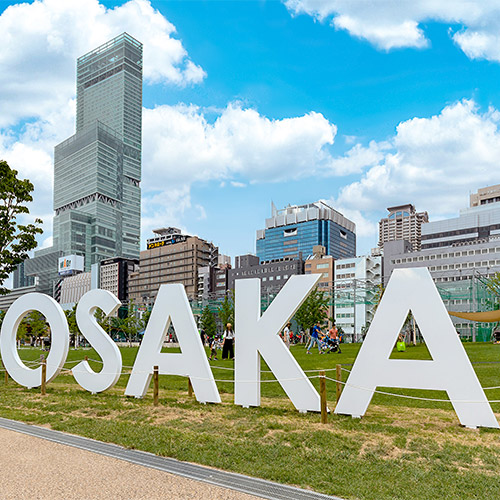
Tenshiba Park
A grassy area in Tennoji Park where you can have a picnic. There are restaurants, cafes, futsal facilities, etc., and events such as summer festivals and beer festivals are also held here.
- address 5-55 Chausuyama-cho, Tennoji-ku, Osaka-shi, Osaka 543-0063
- from REBORN 11min
- SNS
-
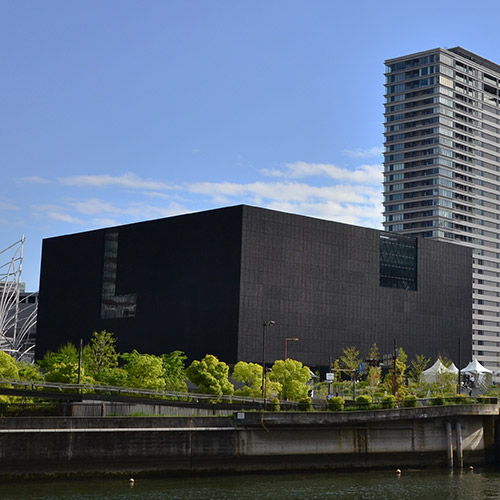
Nakanoshima Art Museum
The art museum opened in 2022 after about 40 years of planning. While specializing in art and design from the late 19th century to the present day, it is increasing its presence as a new art hub in Osaka.
- address 4-3-1 Nakanoshima, Kita-ku, Osaka, Osaka 530-0005
- from REBORN 30min
- SNS
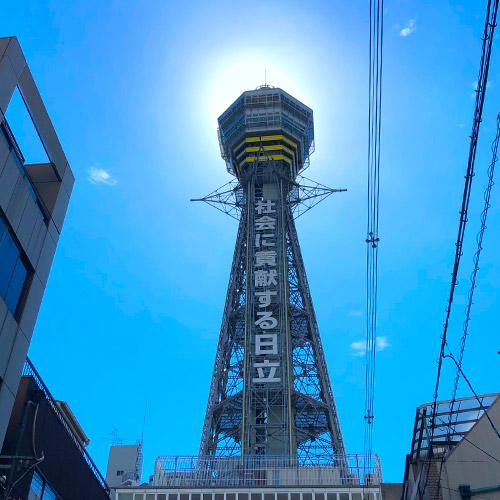
Tsutenkaku Tower
Tsutenkaku is an observation tower built in 1912 in Shinsekai, Naniwa Ward, Osaka City, and the current Tsutenkaku is the second generation. It is said that touching the soles of the feet of the Billiken statue on the observation deck will bring you good luck.
- address 1-18-6 Ebisu Higashi, Naniwa-ku, Osaka, Osaka 556-0002
- from REBORN 11min walk
- SNS
-
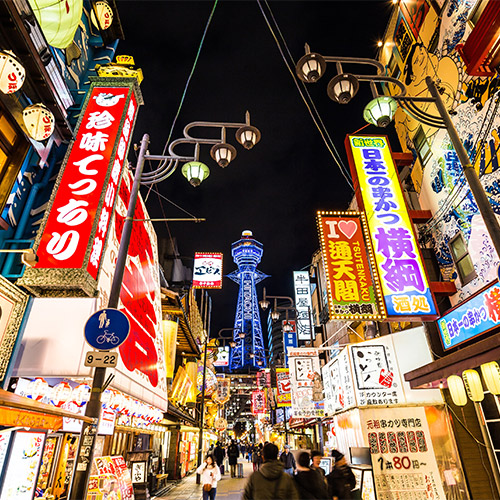
Shinsekai
A downtown area in the southern part of Osaka City where Tsutenkaku and Janjan Yokocho are located. The 5th National Industrial Exhibition was held in 1903, and Tennoji Park, Tsutenkaku Tower, and Luna Park (closed) were built on the site, marking the beginning of the New World. Currently, it is a popular tourist destination where you can enjoy traditional Osaka scenery and Kushikatsu and Doteyaki.
- address 2-5-1 Ebisu Higashi, Naniwa-ku, Osaka-shi, Osaka 556-0002
- from REBORN 11min walk
- SNS
-

Kizu Fresh Market
1710 Kizu Market was originally built around 1710, when people at the time brought goods to the market. For over 300 years since then, it has been popular as the kitchen of Osaka, the ``food town''. Not only professional chefs come here to purchase food, but also general customers can enjoy market gourmet foods such as seafood bowls and tempura bowls.
- address 2-2-8 Shikitsu Higashi, Naniwa-ku, Osaka-shi, Osaka 556-0012
- from REBORN 12min
- SNS
-
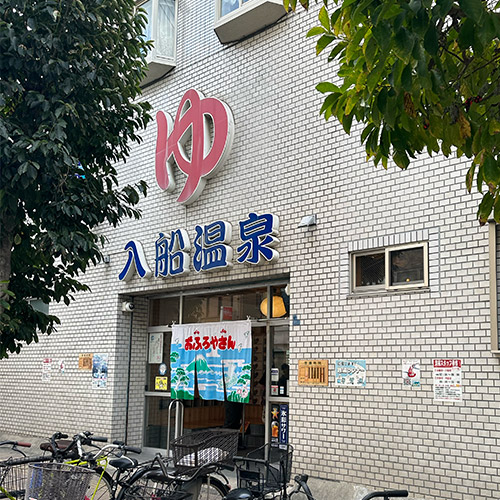
Irifue Onsen
A public bath about 2 minutes walk from our hotel. It is famous for its sauna, which was renovated in 2022. You can enjoy soft water and a cold bath.
- address 1-6-3 Haginochaya, Nishinari-ku, Osaka, Osaka 557-0004
- from REBORN 2min walk
- SNS
-

Kawaii Kimono Rental
A shop that offers kimono experiences, dressing, hair styling, and kimono rental in a shopping district near Sumiyoshi Taisha Shrine. You can change into a kimono and go on outings such as visiting Sumiyoshi Taisha Shrine or sightseeing in Osaka.
- address 3-9-18 Konahama, Suminoe-ku, Osaka-shi, Osaka 559-0001
- from REBORN 15min
- SNS
KYOTO
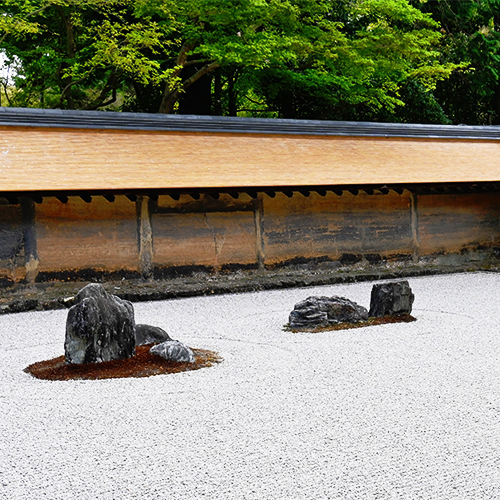
Ryoanji Temple
A Zen temple founded in 1450. The ``Karesansui Garden,'' which consists of 15 stones set in a white sand garden, is world-famous. In 1994, it was registered as a World Cultural Heritage Site as part of the "Historic Monuments of Ancient Kyoto."
- address 13 Shitamachi, Ryoanji Goryo, Ukyo-ku, Kyoto-shi, Kyoto 616-8001
- from REBORN 1h40min
- SNS
-
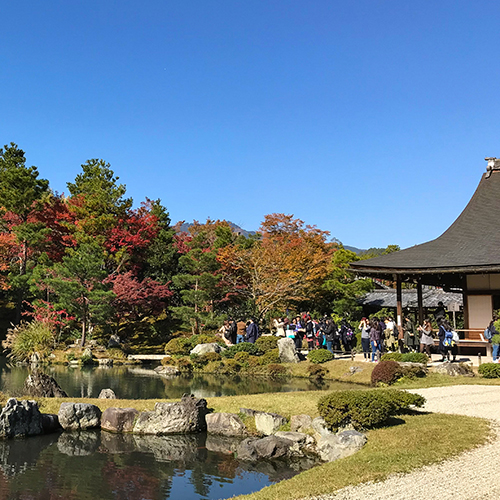
Tenryuji Temple
This is the head temple of the Tenryuji sect of Rinzai sect in Saga Arashiyama. The ``Sogenchi Garden'' is world-famous, and is like a painting that incorporates the mountains around Sogenike. In 1994, it was registered as a World Cultural Heritage Site as part of the "Historic Monuments of Ancient Kyoto."
- address 68 Saga Tenryuji Aonobabacho, Ukyo Ward, Kyoto City, Kyoto Prefecture 616-8385
- from REBORN 1h30min
- SNS
-
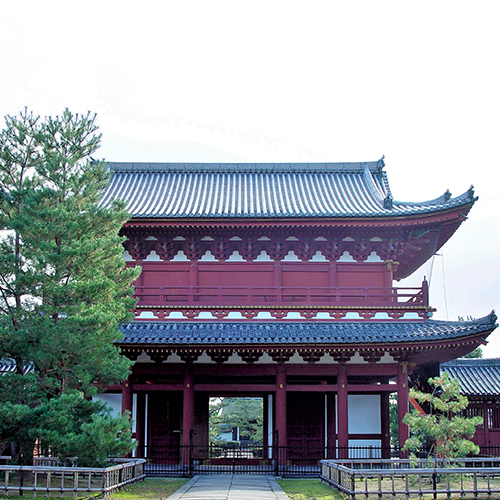
Myoshinji Temple (Cloud Dragon Painting)
The main temple of the Myoshinji sect of the Rinzai sect. 46 sub-temples stand around the central temple, forming one large temple complex. Another highlight is the ``Unryu-zu'' painted on the ceiling by Kano Tanyu, a painter from the Edo period.
- address 1 Hanazono Myoshinjicho, Ukyo-ku, Kyoto-shi, Kyoto 616-8035
- from REBORN 1h40min
- SNS
-
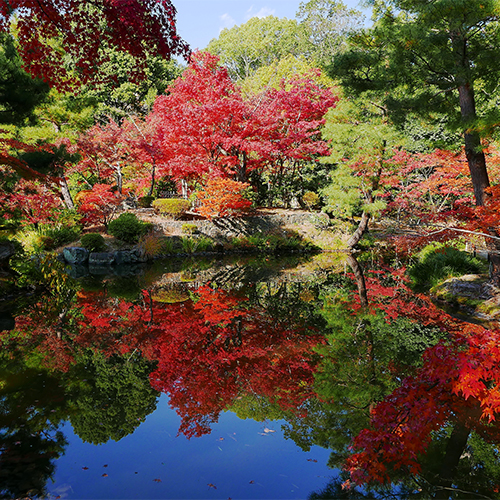
Toujiin Temple(Daruma)
This temple was founded by Takauji Ashikaga, the founder of the Muromachi Shogunate, and Muso Kokushi, the founder of Tenryuji Temple. It is also famous as the family shrine of the Ashikaga Shogun family. One of the highlights is the statue of the founder, painted with a dynamic touch by Sekimokuo, the former head of the Tenryuji sect.
- address 63 Tojiin Kitamachi, Kita-ku, Kyoto City, Kyoto Prefecture 603-8346
- from REBORN 1h45min
- SNS
-
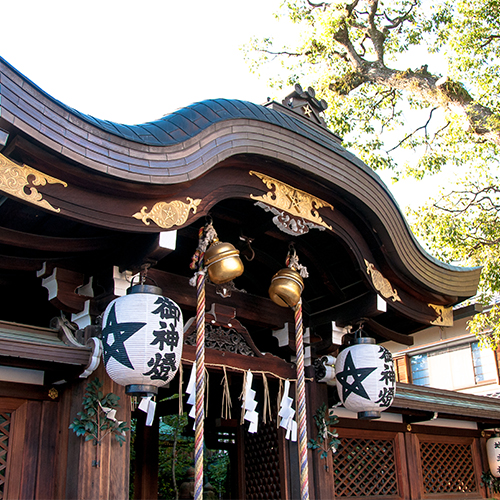
Seimei Shrine
A shrine whose main deity is Abe Seimei, an astronomer from the Heian period. Due to repeated wars and capital improvements, the scale of the shrine was reduced and the shrine building fell into disrepair, but the parishioners played a central role in rebuilding the shrine. The novel and movie sparked the Abe Seimei boom, and now worshipers come from all over Japan.
- address 806 Seimei-cho, Kamigyo-ku, Kyoto-shi, Kyoto 602-8222
- from REBORN 1h30min
- SNS
-
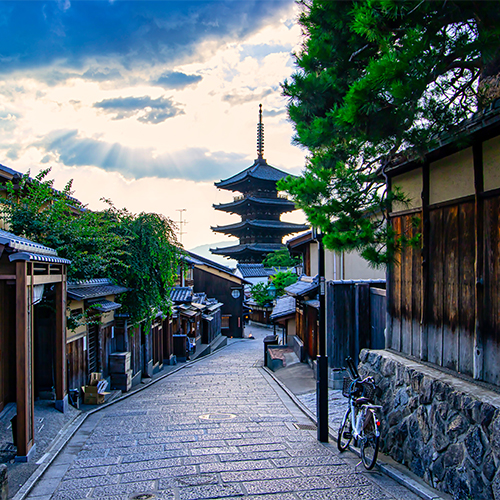
Ninen zaka St.
The approach to Kiyomizu-dera Temple, a world heritage site in Kyoto. The pronunciation is Nineizaka (Nineizaka) and Sanneizaka (Sanneizaka). There are shops selling Japanese sweets, Japanese miscellaneous goods, antique art, Kiyomizu ware, and more. It is also recommended as a place to eat while walking and enjoy the quaint townscape.
- address higashiyama-ku, Kyoto-shi, Kyoto
- from REBORN 1h30min
-

Ryozen Museum Of History
A history museum that opened in 1970 (Showa 45). With the theme of the end of the Edo period and the Meiji Restoration period, approximately 100 items are selected and exhibited to the public from materials and literature related to Sakamoto Ryoma, Saigo Takamori, Takasugi Shinsaku, Shinsengumi, Tokugawa Yoshinobu, and others.
- address 1, Seikanji Ryozancho, Higashiyama-ku, Kyoto-shi, Kyoto 605-0861
- from REBORN 1h35min
- SNS
-
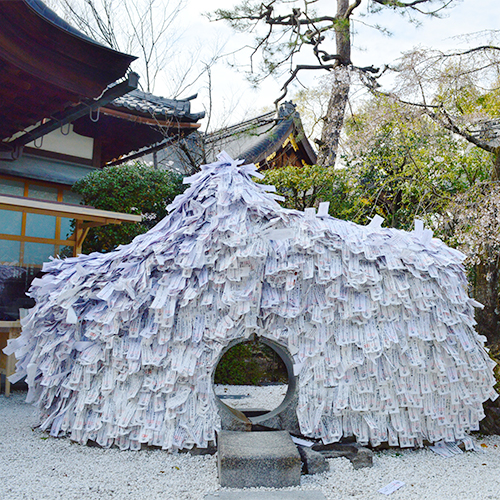
Yasui Konpiragu
It is a historic shrine that is said to have the blessing of cutting off all kinds of bad relationships and finding good ones, and is also known as the ``Enkiri Shrine.'' Visitors make a wish by passing through the hole in the ``Enkiri Enmusubi Monument,'' a huge stone in the shape of an votive tablet.
- address 70 Shimobentencho, Higashiyama-ku, Kyoto-shi, Kyoto 605-0823
- from REBORN 1h25min
- SNS
-
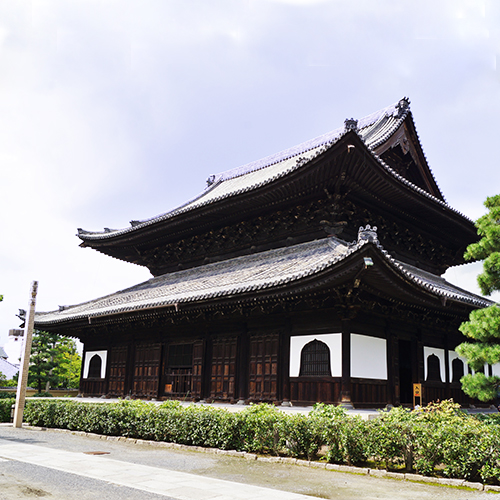
Kenninnji Temple
The oldest Zen temple in Kyoto, said to have been built by Eisai in 1202, and the head temple of the Kenninji school of Rinzai sect. Highlights include the dry landscape garden ``Daioen'', the tea room ``Toyobo'', and the ``Two Dragons'' painted on the ceiling of the main hall.
- address 584 Komatsu-cho, Yamatooji-dori Shijo, Higashiyama-ku, Kyoto-shi, Kyoto 605-0811
- from REBORN 1h15min
- SNS
-
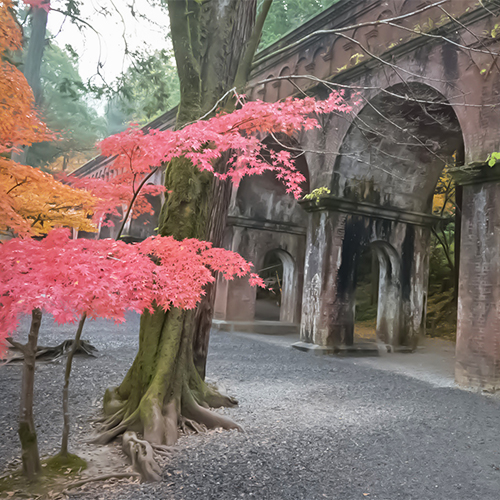
Nanzenji Temple
This temple is the main temple of the Nanzenji sect of the Rinzai sect, which is known as a famous spot for cherry blossoms and autumn leaves. Sanmon, the stage for which Goemon Ishikawa described the Kabuki play Romon Gosangiri as ``a spectacular view, a spectacular view,'' is also counted as ``Japan's three great gates.''
- address 86 Nanzenji Fukuchicho, Sakyo Ward, Kyoto City, Kyoto Prefecture 606-8435
- from REBORN 1h30min
- SNS
-
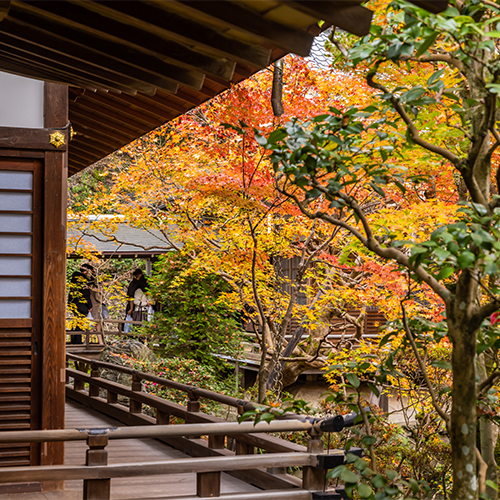
Eikando Zenrinji Temple
It is a famous spot for viewing autumn leaves in the fall, with around 3,000 maple trees, and is the head temple of the Nishiyama Zenrin-ji school of the Jodo sect. The main image of Amida Nyorai is famous as ``Mikaeri Amida'' because it looks back to the left.
- address 48 Eikando-cho, Sakyo-ku, Kyoto-shi, Kyoto 606-8445
- from REBORN 1h30min
- SNS
-
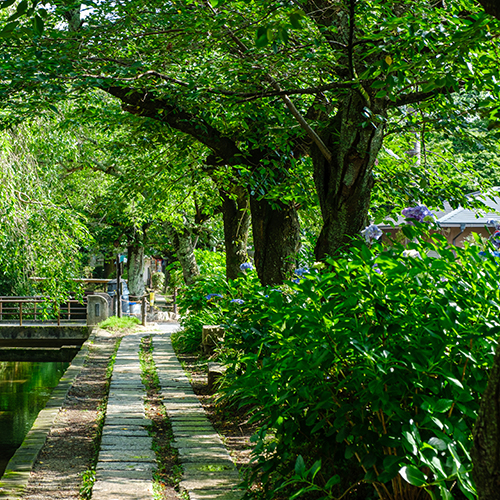
Tetsugakunomichi
A approximately 2km walking path that connects Ginkakuji Temple and Kumano Nakaoji Shrine in Kyoto. It was built as a maintenance walkway for Lake Biwa Canal, and was named ``Philosopher's Path'' after an episode in which modern Japanese philosophers and economists walked lost in thought.
- address Around Shikagaya, Sakyo Ward, Kyoto City, Kyoto Prefecture
- from REBORN 1h45min
-
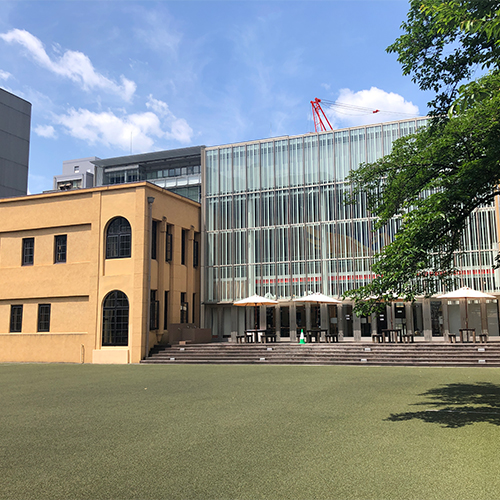
Kyoto International Manga Museum
Japan's first museum and library related to manga culture. We have a wide range of manga materials, from ukiyo-e prints from the Edo period to magazines from the Meiji, Taisho, and early Showa periods, rental books that were popular in postwar markets, and modern blockbusters. Special exhibitions and workshops are also held irregularly.
- address 452 Kanabuki-cho, Nakagyo-ku, Kyoto City, Kyoto Prefecture 604-0846
- from REBORN 1h15min
- SNS
-

Kyoto Museum of Crafts and Design
A museum that tells about the culture (tea ceremony, flower arranging, Noh, Kyogen, etc.) and traditional industries (Yuzen dyeing, braiding, Japanese candles, etc.) born in Kyoto, which has a thousand-year history. In recent years, we have put a lot of effort into introducing contemporary creators, and we have expanded our workshop menu.
- address 9-1 B1F Miyako Messe, Okazaki Seishojicho, Sakyo-ku, Kyoto-shi, Kyoto 606-8343
- from REBORN 1h30min
- SNS
-

Hosomi Museum
This museum was opened based on the collection collected by the three generations of the Hosomi family, who were businessmen. It covers a wide range of Japanese art history, including Edo paintings, Shinto and Buddhist art, and tea ceremony art. There is also a tea room, shop, and cafe inside the building.
- address 6-3 Okazaki Saisho Teramachi, Sakyo Ward, Kyoto City, Kyoto Prefecture 606-8342
- from REBORN 1h30min
- SNS
-
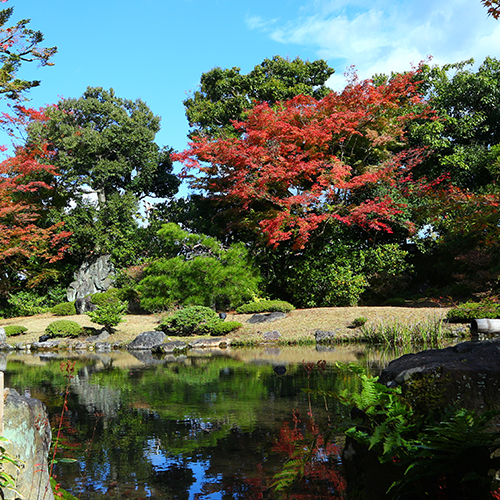
Kyoto villa, Murin-an
The villa of politician Aritomo Yamagata was built during the Meiji era. There is a Japanese garden, a main building, a Western-style building, and a tea room, and the garden designed by Jihei Ogawa VII is highly praised as a ``naturalistic modern Japanese garden.'' This place was the setting for the Murinan Conference, which discussed foreign policy before the outbreak of the Russo-Japanese war.
- address 3131 Kusakawacho, Nanzenji, Sakyo Ward, Kyoto City, Kyoto Prefecture 606-8437
- from REBORN 1h30min
- SNS
-
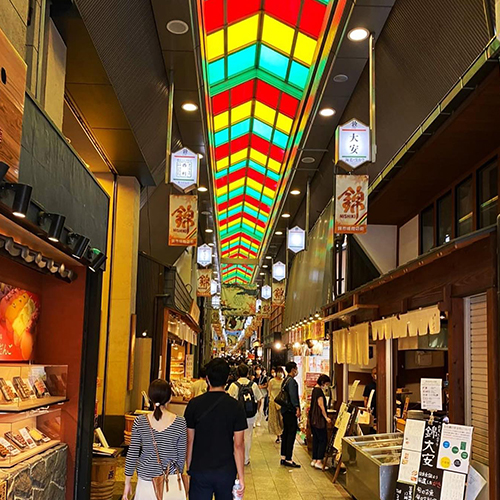
Nishiki Market
This market is known as ``Kyoto's Kitchen,'' with approximately 130 shops lined up approximately 400 meters from east to west. Legend has it that there was already a market there during the Heian period, and it continues to support Kyoto's food culture. This is a popular spot not only for purchasing essential Kyoto cuisine ingredients such as Kyoto vegetables, yuba, and raw gluten, but also for eating gluten-free buns, Kyoto-style takoyaki, and more.
- address Nakagyo Ward, Kyoto City, Kyoto Prefecture 604-8055
- from REBORN 1h15min
- SNS
NARA
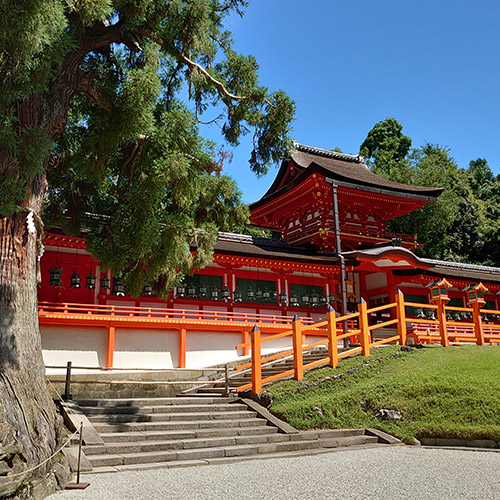
Kasuga Taisha
A shrine built during the Nara period for the protection of Heijo-kyo and the prosperity of the people. It is also famous as the headquarters of Kasuga Taisha shrines nationwide. In 1998, it was registered as a World Cultural Heritage Site as part of the "Historic Properties of Ancient Nara."
- address 160 Kasuganocho, Nara City, Nara Prefecture 630-8212
- from REBORN 1h5min
- SNS
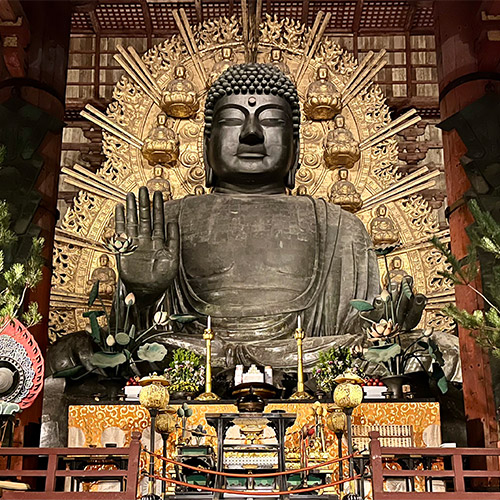
Todaiji Temple
This temple is famous for the "Great Buddha of Nara." It was built in the Nara period, but was destroyed by fire twice, and the current Great Buddha Hall was rebuilt in 1709. In 1998, it was registered as a World Cultural Heritage Site as part of the "Historic Properties of Ancient Nara."
- address 406-1 Zoshicho, Nara City, Nara Prefecture 630-8587
- from REBORN 1h5min
- SNS
-
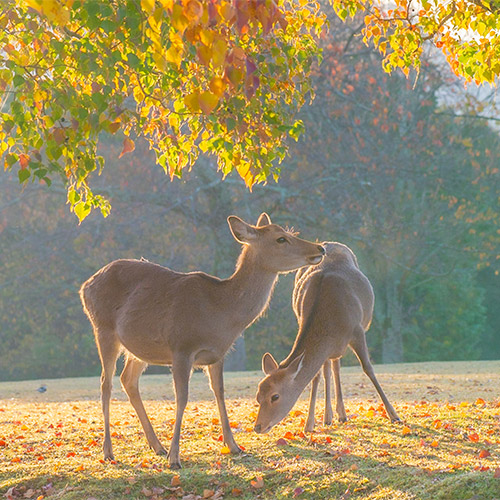
Nara Park
A vast park that includes Todaiji Temple, Kasuga Taisha Shrine, and Mt. Wakakusa. One of the highlights is that over 1,000 deer live peacefully here.
- address 30 Noboriojicho, Nara 630-8501
- from REBORN 55min
- SNS
WAKAYAMA
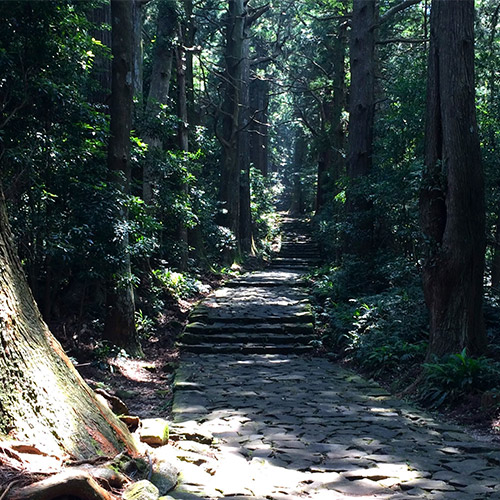
Kumano Kodo
A pilgrimage route to Kumano Hongu Taisha, Kumano Hayatama Taisha, and Kumano Nachi Taisha, which are known as the ``Kumano Sanzan''. In 2004, it was registered as a World Cultural Heritage Site as part of the "Sacred Sites and Pilgrimage Routes of the Kii Mountain Range."
-
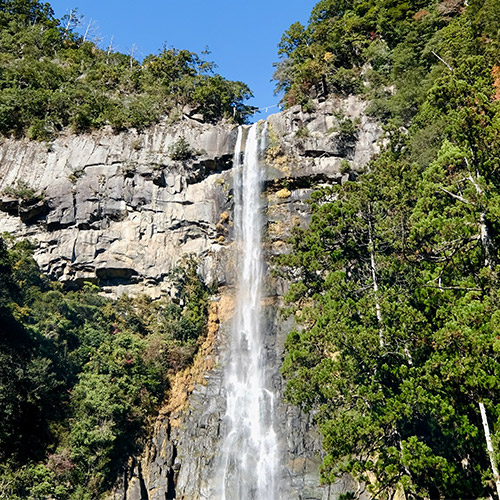
Kumano Nachi Taisha
This waterfall is located in the middle reaches of the Nachi River, and the drop to the basin is 133 meters. It is counted as one of Japan's top three waterfalls, along with Kegon Falls (Tochigi Prefecture) and Fukuroda Falls (Ibaraki Prefecture). In 2004, it was registered as a World Heritage Site as part of the "Sacred Sites and Pilgrimage Routes of the Kii Mountain Range."
- address Nachiyama, Nachikatsuura-cho, Higashimauro-gun, Wakayama Prefecture 649-5301
- from REBORN 4h30min
- SNS
-
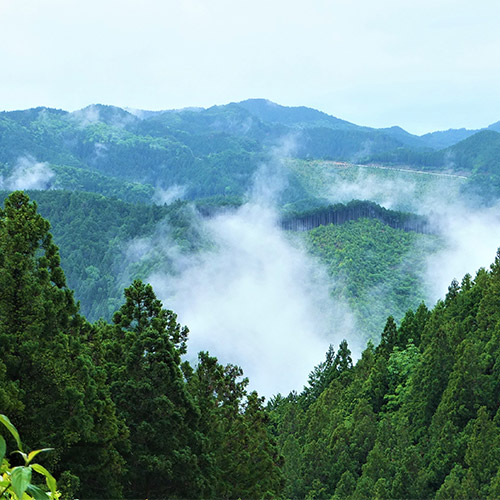
Koyasan
This place was opened by Kobo Daishi Kukai over 1200 years ago as a training hall for Zen training. An important sacred place in Japanese Buddhism. In 2004, it was registered as a World Cultural Heritage Site as part of the "Sacred Sites and Pilgrimage Routes of the Kii Mountain Range."
- address Takano-cho, Ito-gun, Wakayama Prefecture 648-0211
- from REBORN 1h30min
- SNS





